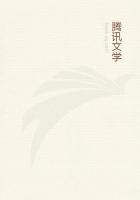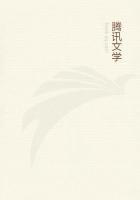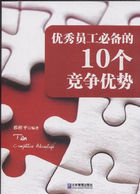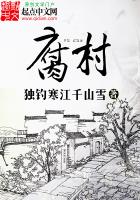Reasoning in this wise, the Mundas of Bengal thus account for peculiarities of certain animals. Sing Bonga, the chief god, cast certain people out of heaven; they fell to earth, found iron ore, and began smelting it. The black smoke displeased Sing Bonga, who sent two king crows and an owl to bid people cease to pollute the atmosphere. But the iron smelters spoiled these birds' tails, and blackened the previously white crow, scorched its beak red, and flattened its head. Sing Bonga burned man, and turned woman into hills and waterspouts.
Dalton, pp. 186, 187.
Examples of this class of myth in Indo-Aryan literature are not hard to find. Why is dawn red? Why are donkeys slow? Why have mules no young ones? Mules have no foals because they were severely burned when Agni (fire) drove them in a chariot race.
Dawn is red, not because (as in Australia) she wears a red kangaroo cloak, but because she competed in this race with red cows for her coursers. Donkeys are slow because they never recovered from their exertions in the same race, when the Asvins called on their asses and landed themselves the winners. And cows are accommodated with horns for a reason no less probable and satisfactory.
Aitareya Brahmana, ii. 272, iv. 9.
iv. 17.
Though in the legends of the less developed peoples men and women are more frequently metamorphosed into birds and beasts than into stones and plants, yet such changes of form are by no means unknown. To the north-east of Western Point there lies a range of hills, inhabited, according to the natives of Victoria, by a creature whose body is made of stone, and weapons make no wound in so sturdy a constitution. The blacks refuse to visit the range haunted by the mythic stone beast. "Some black fellows were once camped at the lakes near Shaving Point. They were cooking their fish when a native dog came up. They did not give him anything to eat. He became cross and said, 'You black fellows have lots of fish, but you give me none'. So he changed them all into a big rock. This is quite true, for the big rock is there to this day, and I have seen it with my own eyes." Another native, Toolabar, says that the women of the fishing party cried out yacka torn, "very good". A dog replied yacka torn, and they were all changed into rocks. This very man, Toolabar, once heard a dog begin to talk, whereupon he and his father fled. Had they waited they would have become stones. "We should have been like it, wallung," that is, stones.
Native narrator, ap. Brough Smyth, i. 479.
Among the North American Indians any stone which has a resemblance to the human or animal figure is explained as an example of metamorphosis. Three stones among the Aricaras were a girl, her lover and her dog, who fled from home because the course of true love did not run smooth, and who were petrified. Certain stones near Chinook Point were sea-giants who swallowed a man. His brother, by aid of fire, dried up the bay and released the man, still alive, from the body of the giant. Then the giants were turned into rocks. The rising sun in Popol Vuh (if the evidence of Popol Vuh, the Quichua sacred book, is to be accepted) changed into stone the lion, serpent and tiger gods. The Standing Rock on the Upper Missouri is adored by the Indians, and decorated with coloured ribbons and skins of animals. This stone was a woman, who, like Niobe, became literally petrified with grief when her husband took a second wife. Another stone-woman in a cave on the banks of the Kickapoo was wont to kill people who came near her, and is even now approached with great respect. The Oneidas and Dacotahs claim descent from stones to which they ascribe animation. Montesinos speaks of a sacred stone which was removed from a mountain by one of the Incas. A parrot flew out of it and lodged in another stone, which the natives still worship.
The Breton myth about one of the great stone circles (the stones were peasants who danced on a Sunday) is a well-known example of this kind of myth surviving in folk-lore. There is a kind of stone Actaeon near Little Muniton Creek, "resembling the bust of a man whose head is decorated with the horns of a stag". A crowd of myths of metamorphosis into stone will be found among the Iroquois legends in Report of Bureau of Ethnology, 1880-81. If men may become stones, on the other hand, in Samoa (as in the Greek myth of Deucalion), stones may become men. Gods, too, especially when these gods happen to be cuttlefish, might be petrified. They were chased in Samoa by an Upolu hero, who caught them in a great net and killed them. "They were changed into stones, and now stand up in a rocky part of the lagoon on the north side of Upolu."
Mauke, the first man, came out of a stone. In short, men and stones and beasts and gods and thunder have interchangeable forms.
In Mangaia the god Ra was tossed up into the sky by Maui and became pumice-stone. Many samples of this petrified deity are found in Mangaia. In Melanesia matters are so mixed that it is not easy to decide whether a worshipful stone is the dwelling of a dead man's soul or is of spiritual merit in itself, or whether "the stone is the spirit's outward part or organ". The Vui, or spirit, has much the same relations with snakes, owls and sharks.
Qasavara, the mythical opponent of Qat, the Melanesian Prometheus, "fell dead from heaven" (like Ra in Mangia), and was turned into a stone, on which sacrifices are made by those who desire strength in fighting.
See authorities ap. Dorman, Primitive Superstitions, pp. 130-138.
Dorman, p. 133.
Many examples are collected by J. G. Muller, Amerikanischen Urreligionen, pp. 97, 110, 125, especially when the stones have a likeness to human form, p. 17a. Im der That werden auch einige in Steine, oder in Thiere and Pflanzen verwandelt." Cf. p. 220.
Instances (from Balboa) of men turned into stone by wizards, p.
309.
Preller thinks that Actaeon, devoured by his hounds after being changed into a stag, is a symbol of the vernal year. Palaephatus (De Fab. Narrat.) holds that the story is a moral fable.
Dorman, p. 137.














